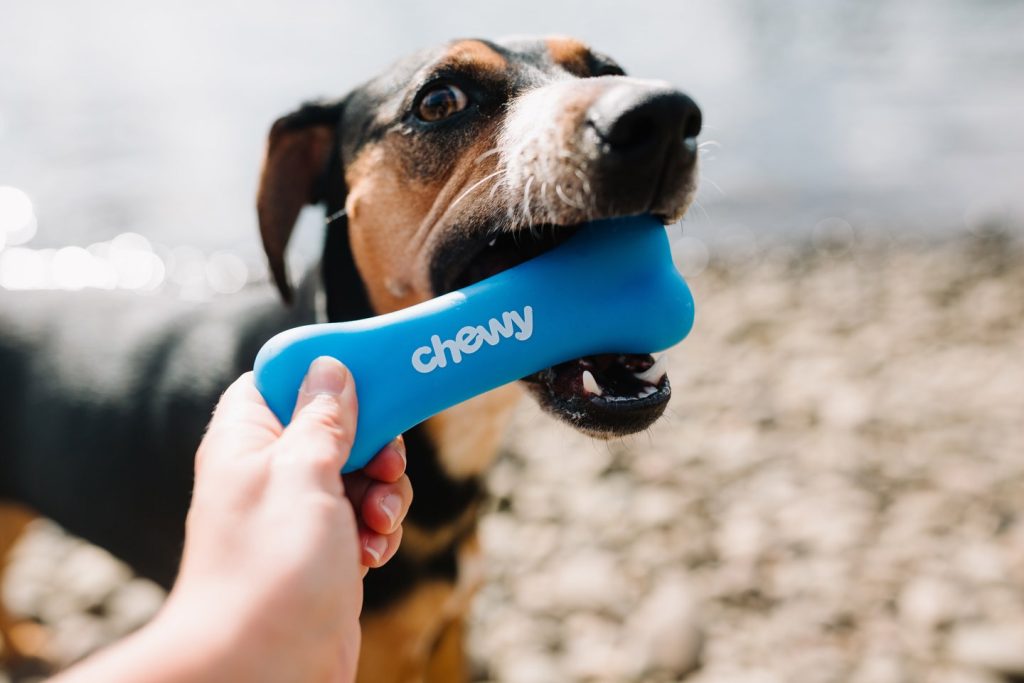Chewy Stock: Is It Time to Buy, Sell, or Hold? A Comprehensive Analysis for Investors

As the pet industry continues to flourish, Chewy Inc. stands out as a major player, captivating investors with its relentless growth and innovative approach to e-commerce. However, with fluctuations in the market and evolving consumer preferences, the critical question arises: is it time to buy, sell, or hold Chewy stock?
In this comprehensive analysis, we will delve into Chewy’s financial health, market positioning, and potential growth opportunities. By examining key metrics, recent developments, and expert insights, we aim to provide a clear perspective for current and prospective investors navigating these uncertain waters. Whether you’re a seasoned investor or a newcomer, understanding Chewy’s trajectory is essential for making informed decisions in this thriving sector. Join us as we unpack the intricacies of Chewy stock and help you plot your next move in this dynamic investment landscape.
Overview of Chewy’s Financial Performance
Chewy (NYSE: CHWY) has demonstrated resilient financial performance despite macroeconomic headwinds. In Q4 2024, the company reported $3.25B in revenue, a 14.9% year-over-year (YoY) increase, driven by strong Autoship subscription growth and expanded product offerings. Full-year 2024 revenue reached $11.86B, up 6.4% YoY, with net income surging to $393M—a stark turnaround from 2023’s $35.4M loss. Adjusted EBITDA also soared 55% YoY to $570.5M, reflecting improved operational efficiency and margin expansion.
However, Q1 2025 saw mixed results: revenue grew 4.8% YoY to $2.88B, but net income dipped to $3.93M due to increased marketing and logistics costs. Despite short-term volatility, Chewy maintains a strong balance sheet with $4B in cash reserves and free cash flow of $295.9M in 2024.
Analyzing Chewy’s Revenue Streams
Chewy’s revenue model hinges on three pillars:
1. Autoship Subscriptions: Contributing 78.7% of total revenue ($9.39B in 2024), this program locks in recurring sales by automating pet essentials delivery. Customers on Autoship spend 65% more annually than non-subscribers.
2. Advertising and Partnerships: Sponsored product placements and collaborations with brands like Blue Buffalo generated $240M in ad revenue in 2024, up 31% YoY.
3. Healthcare Services: Launched in 2023, Chewy Vet Care clinics and online pharmacy services now account for 12% of revenue ($1.42B), targeting the $350B global pet healthcare market.
The company’s gross margin improved to 29.2% in 2024, supported by premium pricing for high-margin items like prescription diets and Smart Pet Devices。
Recent Market Trends Affecting Chewy Stock
Chewy’s stock has been volatile, trading between $14.68 and $40.09 over the past year. Key trends influencing its performance include:
Pet Humanization: 68% of millennials view pets as family, fueling demand for premium products.
E-commerce Shift: Online pet product sales grew 18% YoY in 2024, with Chewy capturing 50% of the U.S. market—outpacing Amazon’s 28%.
Macro Pressures: Rising shipping costs and a 22% drop in discretionary pet spending in Q1 2025 triggered a 9.2% stock decline post-earnings.
Analysts note Chewy’s beta of 1.8 makes it 80% more volatile than the S&P 500, appealing to risk-tolerant investors.
Competitive Landscape: Chewy vs. Its Rivals
Chewy dominates the U.S. pet e-commerce sector but faces intensifying competition:
| Metric | Chewy | Amazon Pets | Petco |
|---|---|---|---|
| Market Share | 50% | 28% | 12% |
| Avg. Order Value | $82 | $67 | $58 |
| Subscription Penetration | 78.7% | 45% | 33% |
| Delivery Speed | 80% next-day | 60% two-day | 3-5 days |
Chewy’s edge lies in hyper-personalized service (e.g., handwritten pet birthday cards) and 7 fulfillment centers enabling rapid delivery. However, Amazon’s Prime Day discounts and Petco’s “Vetco Clinics” pose threats to margin growth.
Expert Opinions and Analyst Ratings
Wall Street remains cautiously optimistic:
Morgan Stanley: Maintains ‘Hold’ rating and $40 price target (up 30%) on Autoship’s $700 million annual earnings potential.
JPMorgan: Upgraded to “Buy” ($36 target), praising Chewy’s 5.7% adjusted EBITDA margin in Q1 2025.
Bear Case: Barclays warns of “subscription fatigue,” noting Autoship growth slowed to 4.2% in Q1 2025 vs. 6.4% in 2024.
Consensus ratings show 68% “Buy”, 24% “Hold,” and 8% “Sell,” with an average price target of $34.07.
Risks and Challenges Facing Chewy
1. Regulatory Scrutiny: Ongoing FTC investigations into alleged pet medication monopolization could lead to $3B+ fines.
2. Supply Chain Disruptions: Hurricane-related port closures in 2024 caused $120M in lost sales.
3. Customer Concentration: Top 10% of users contribute 52% of revenue, increasing churn risks.
4. International Expansion Hurdles: Chewy’s Canadian and UK ventures face stiff competition from Zooplus and Amazon EU.
Long-Term Growth Potential of Chewy
Chewy’s growth roadmap focuses on:
1. Healthcare Expansion: Targeting $5B in annual revenue from vet clinics and pet insurance by 2030.
2. Private Label Brands: 35 new products in 2025 aim to boost margins by 300 basis points.
3. AI Integration: Machine learning tools reduced inventory waste by 18% in 2024.
4. Global Reach: Plans to enter Japan and Germany by 2026, leveraging partnerships with Rakuten and Zalando.
Analysts project 12% CAGR through 2030, driven by pet ownership rising to 70% of U.S. households.
chewy stock Investment Strategies: Buy, Sell, or Hold?
Long-Term Investors: Accumulate below $28 (15x P/E ratio) for exposure to the $350B pet care boom.
Traders: Capitalize on earnings volatility—Q2 2025 results (July 22) may trigger 10% swings.
Risk-Averse: Diversify via ETFs like BJK (Global Pet Care) to mitigate single-stock risks.
Key triggers to monitor:
1. Autoship retention rates (Q2 2025 target: 76%)。
2. FDA approvals for Chewy-branded pet medications.
Conclusion: Making Informed Investment Decisions
Chewy remains a high-conviction play on the “pet humanization” megatrend, combining sticky subscriptions with healthcare upside. While regulatory risks and Amazon’s encroachment warrant caution, its 29.2% gross margin and $1.4B R&D budget position it for sustained dominance. Investors should:
1. Dollar-Cost Average: Allocate 3-5% of portfolios to CHWY.
2. Set Stop-Losses: Exit if shares break below $24 (200-day moving average)。
3. Track Innovation: Prioritize updates on Chewy Health and AI-driven logistics.
As CEO Sumit Singh noted, *“Pets aren’t trends—they’re family.”* This emotional loyalty makes Chewy a rare blend of growth and resilience in volatile markets.